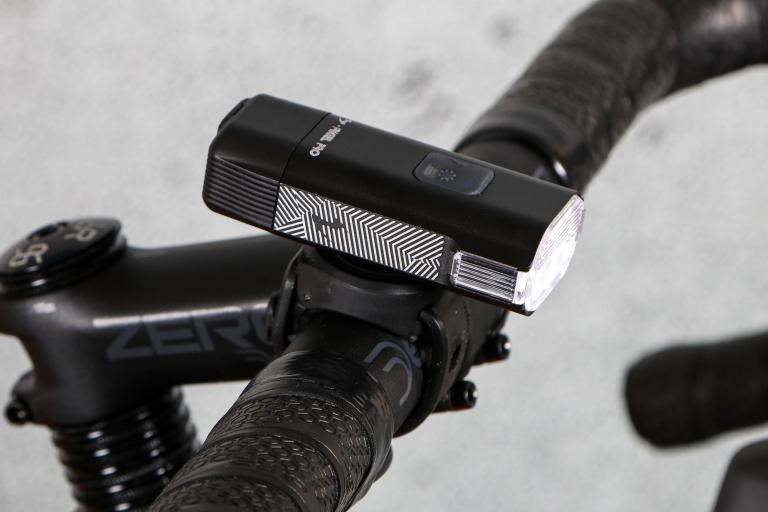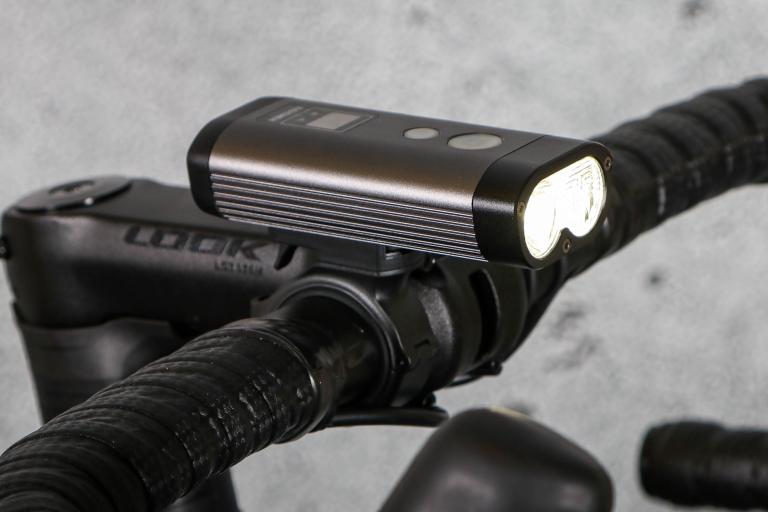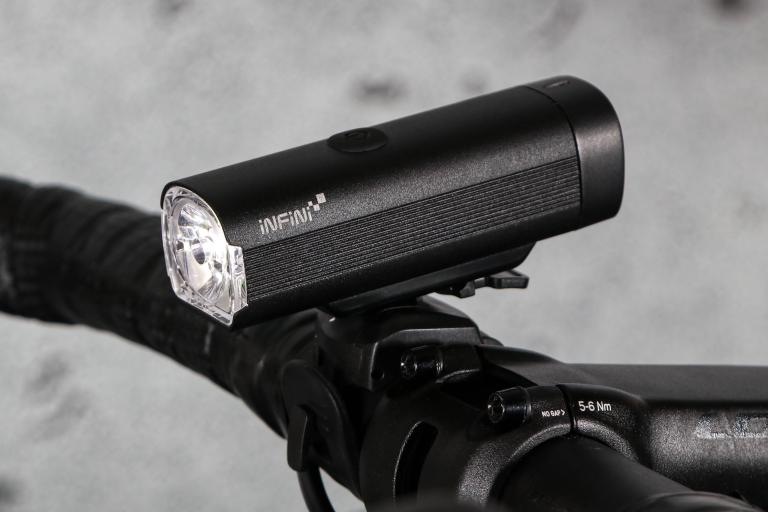- News
- Reviews
- Bikes
- Accessories
- Accessories - misc
- Computer mounts
- Bags
- Bar ends
- Bike bags & cases
- Bottle cages
- Bottles
- Cameras
- Car racks
- Child seats
- Computers
- Glasses
- GPS units
- Helmets
- Lights - front
- Lights - rear
- Lights - sets
- Locks
- Mirrors
- Mudguards
- Racks
- Pumps & CO2 inflators
- Puncture kits
- Reflectives
- Smart watches
- Stands and racks
- Trailers
- Clothing
- Components
- Bar tape & grips
- Bottom brackets
- Brake & gear cables
- Brake & STI levers
- Brake pads & spares
- Brakes
- Cassettes & freewheels
- Chains
- Chainsets & chainrings
- Derailleurs - front
- Derailleurs - rear
- Forks
- Gear levers & shifters
- Groupsets
- Handlebars & extensions
- Headsets
- Hubs
- Inner tubes
- Pedals
- Quick releases & skewers
- Saddles
- Seatposts
- Stems
- Wheels
- Tyres
- Health, fitness and nutrition
- Tools and workshop
- Miscellaneous
- Cross country mountain bikes
- Tubeless valves
- Buyers Guides
- Features
- Forum
- Recommends
- Podcast
review
 Luu Pico 380
Luu Pico 380£89.99
VERDICT:
Good beam for road use, but there's a lot of competition in this category
Weight:
167g
Contact:
www.fisheroutdoor.co.uk
At road.cc every product is thoroughly tested for as long as it takes to get a proper insight into how well it works. Our reviewers are experienced cyclists that we trust to be objective. While we strive to ensure that opinions expressed are backed up by facts, reviews are by their nature an informed opinion, not a definitive verdict. We don't intentionally try to break anything (except locks) but we do try to look for weak points in any design. The overall score is not just an average of the other scores: it reflects both a product's function and value – with value determined by how a product compares with items of similar spec, quality, and price.
What the road.cc scores meanGood scores are more common than bad, because fortunately good products are more common than bad.
- Exceptional
- Excellent
- Very Good
- Good
- Quite good
- Average
- Not so good
- Poor
- Bad
- Appalling
The LUU Pico 380 is a compact but bright front light with a fairly narrow beam that is well suited to road riding.
Until a couple of years ago, fairly anaemic front lights were the norm on the road; enough to be seen by but not enough to hurtle down a hill in the black of night. For greater illumination you were looking at a mountain bike light with separate battery pack and a fairly hefty overall weight.
So rapid has the development of battery and particularly LED technology been, that today's compact and mid-price front lights can kick out a lot of light. Great for seeing where you're going and perhaps even more effective for annoying other road users. This winter has seen a lot of debate about whether bike lights are getting too bright and posing a genuine safety risk by blinding other users.
As can be seen in our light beam test, the Pico 380 is certainly not the brightest light we tested but for its size and price it does pretty well. It has a more tightly-focused beam than many lights which suits road-riding really well. You can direct the main area of illumination onto the tarmac and avoid annoying other road-users. The beam output is basically circular so you do notice the narrower spread when going around tight corners, where you may wish for some more light out to the sides.
The light unit itself has a solid, well-built feel to it. It has a single button which you hold to switch it on or off. Subsequent presses cycle through the brightness levels. If you hold it for longer still, it toggles between flashing and constant modes (although you do go via "off" on the way, which isn't ideal while riding). There are four constant levels and three different speeds of flashing. Battery life varies between 2:30 on full power to 20+ hours on flashing.
I tend to prefer flashing lights for daytime use in traffic to be sure of being seen, and constant lighting at night-time (as parts of my commute are unlit), so I used most of the modes over the test period. At higher speeds in darkness I found the highest power level was required, but for urban use you can save battery life by using the lower levels. This generally gave enough life for a week's commuting (8 miles each way). On the high setting I was able to see far enough for 30mph or so on a good surface. On bad surfaces you may want a bit more light to be able to pick out the lumps and bumps.
The button illuminates blue (when on constant) or red (when on flashing). It switches to red flashing at a claimed 10% charge level. This warning came far too late on the first unit we had - there were only about 3 minutes between the battery warning and the light switching itself altogether, with the result that I found myself stranded in the dark a few miles from home. This light went back to the distributors, and the the replacement fared a little better - perhaps 15-20 minutes of low-power constant beam remained after the warning.
I still don't think this is enough. Given that the lowest-power constant setting has a claimed 15-hour life, you should really have a minimum of 1 hour on low after the battery warning. I much prefer lights that have a three-stage battery indicator, rather than simply telling you at the last moment that they're about to expire.
The light fixes to the bar with an excellent clamp. This is sized for an oversized bar but supplied with the necessary rubber shim to fit older bikes. The clamp itself has an M4 capscrew, so you do need a 3mm Allen key to fit or adjust it. If you just use the light on one bike, this is not a problem, but if you're perennially switching it between bikes it would be nicer to have a thumbscrew that you could operate with tools. Spare clamps are available and this would be something I'd certainly consider.
Fixing to the clamp with a quarter-turn (akin to a Garmin), once in place the light is held very solidly. I found it a bit annoying that once you'd clamped the light to the bar you couldn't adjust the angle (without digging out that 3mm Allen key), but I found that if you didn't tighten the clamp too much (and added a little grease) it would hold firmly but still allow you to tweak the angle when required.
Charging is via a mains charger with a unique round plug (not a micro-USB as is increasingly common elsewhere). This does mean that you're limited to charging it wherever you keep the charger - no top-ups at the office. The charging port is sealed with a little rubber bung - I had no issues with waterproofing during the test.
LUU have quite a range of lights - all with a similar operation and clamp, but with increasing size and brightness. The Pico 380 is the smallest, cheapest and lightest of the range. In terms of pricing, you can find it for around £70 online.
There are quite a few competitors, however. Obvious alternatives would include the Cateye Volt 300 - £20 cheaper, similar lighting output and the option to carry a spare battery. The Lezyne Power Drive XL (/content/review/99706-lezyne-power-drive-xl-front-light) is priced similarly to the LUU and also has the option to carry a spare battery. Both the Cateye and the Lezyne are designed to allow side visibility - something which is sadly lacking here.
Curious as to why the LUU advertised a "multi-port" system, despite no reference to this in the instructions, I found that that you can buy a remote control button which is connected via a cable to the same charger port. Other optional items include a helmet mount and this would be a good light for this purpose - not too heavy and with a fairly focused beam. £15 seems a lot for a helmet mount or spare bar mount, however - Lezyne offer a package including helmet mount, storage case and spare battery for the same price increase.
Conclusion
For a compact light, the Pico has a really good beam for road use - less prone to annoying other road users than wider beams. Solid, well-made case and excellent clamp. Issues with the battery life indicator dented my confidence, however - I'd try and carry a spare light. Up against some excellent competition - this might not be my first choice.
Verdict
Good beam for road use, but there's a lot of competition in this category.
The light comparator
If you have a nice big screen you can click here for the widescreen version (1400x1000px)
road.cc test report
Make and model: LUU Pico 380 front light
Size tested: n/a
Tell us what the light is for, and who it's aimed at. What do the manufacturers say about it? How does that compare to your own feelings about it?
- The Pico 380 is the perfect light to take out on the road during dark winter months and is ideal for commuting where you can charge the light at work ready for the ride home.
- Visibility will never be a problem thanks to an impressive 380 lumens of lighting power, even on the most dimly lit roads.
- There are four constant and three flashing modes so you can select the best lighting level to suit the specific conditions you are riding in as well as conserve battery life when required.
- Constructed of toughened Teflon-coated aluminium, the Pico 380 will withstand the most hostile of weather, while the 90° twist-and-lock bracket holds the light firmly in place whatever the terrain.
Tell us some more about the technical aspects of the light?
Technical Specification
- Light Output / Burn Time:
- High 380 Lumens / 2hr 30
- Medium 190 Lumens / 5hr
- Low 100 Lumens / 8hr
- Save 50 Lumens / 15hr
- Flash >20 hrs
- Charge Time (2600mA); 6hrs (4.2V/1000mA)
Construction
- US Cree XML R5 x 1pc LED
- 2600mA Samsung SDI Lithium-ion Battery
- Electroplating Teflon Coated Aluminium 6061 Body
- Anodized Aluminium Head
- High-grade Finland Lens
Volumetrics
- Weight; 140g, inc. battery & handlebar mount
- Diameter; 35mm
- Length; 83mm
Rate the light for quality of construction:
8/10
Rate the light for design and ease of use. How simple was the light to use?
7/10
Simple one-button operation - only issue is the need to go via "off" when switching between flashing and constant.
Rate the light for the design and usability of the clamping system/s
8/10
Really good solid clamp and quick-release mechanism. Would be nice if it used a thumb-screw rather than needing a tool to adjust.
Rate the light for waterproofing. How did it stand up to the elements?
8/10
No concerns during the test period - used in rain and hosed down without problems.
Rate the light for battery life. How long did it last? How long did it take to recharge?
7/10
Battery life per se is good. Low-power warning comes on MUCH too late, however.
Rate the light for performance:
8/10
Very well-suited beam for road-use. Would be improved by better side visibility.
Rate the light for durability:
8/10
Rate the light for weight, if applicable:
8/10
For the output and the battery life, this is a good weight.
Rate the light for value:
6/10
Looks pricey compared to Cateye Volt 300.
Tell us what you particularly liked about the light
Well-focused beam carried far enough to see by, could be positioned to avoid blinding drivers and other road-users.
Tell us what you particularly disliked about the light
Wasn't impressed to see battery warning only 3 minutes before it ran out of juice. Second test unit was better but still needs to give more warning.
Did you enjoy using the light? Yes, till the battery ran out.
Would you consider buying the light? Maybe but I think there may be better options.
Would you recommend the light to a friend? Maybe.
About the tester
Age: 35 Height: 6 Weight: 78kg
I usually ride: Boardman CX team for the daily commute My best bike is: Rose Xeon CRS
I've been riding for: Over 20 years I ride: Most days I would class myself as: Expert
I regularly do the following types of riding: road racing, time trialling, commuting, touring, club rides, sportives, general fitness riding, fixed/singlespeed, mtb,
Jez spends his days making robots that drive cars but is happiest when on two wheels. His roots are in mountain biking but he spends more time nowadays on the road, occasionally racing but more often just riding.




Driver got her own back on bailiffs who clamped car...
Eh? Where is this Hebdon Bridge you're talking about and what has it to do with Calderdale?
Mine takes 38s but the clearance on the front derailleur is rather tight.
Physics, it's how things work.
TNT can sit on my seatpost and swivel. Not giving a penny to the vile bean counters.
Dawlish driver suffered seizure before smashing into wall...
I agree. Off to sign.
With both Hunt and Scribe, I really think you'd be mad to get wheels from anybody else.
Weight is a problem when it costs you in energy on the uphill which is lost on the downhill, or lost in braking. But if that energy can be...
And because they are so likely to flip and are heavier they have to have stronger and wider A pillars which reduces visibility.